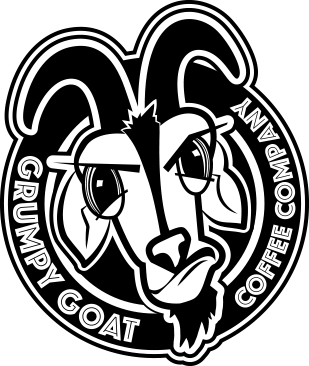How to do Coffee Cupping at Home
One skyrocketing trend that was triggered by people spending more time indoors during the coronavirus pandemic is brewing coffee at home. “Coffee Cupping” is the process of tasting, describing, and scoring coffee.
Trying different coffees and different brewing methods can be fun – a lot like doing a wine tasting.
Expertly trained and licensed professional “cuppers” grade the coffees. These very skilled individuals have completed testing requirements much like the Master Sommeliers in the world of wine.
So we thought we would share some tips about how to do a coffee cupping at home.

Items Needed for Coffee Cupping
No fancy equipment required!
Preparing to have fun with your at-home coffee cupping only requires a few simple items which you’ll find already in most kitchens.
Even if you do not have exactly the right items, you can improvise without too much inconvenience.
Here’s your short list of items to gather:
- Fresh roasted coffee beans (we recommend 3 or 4 single origin coffees)
- Coffee grinder (use a medium grind setting)
- Kitchen scale with grams setting
- Bullion (soup) spoons
- Tea kettle
- Cupping vessels
- Pen and paper for taking notes
If you do not have a coffee grinder at home, no problem. Just make sure that you use freshly ground coffee from your favorite roaster.
Or, if you are curious about getting your own coffee grinder, check out our coffee grinding article for options and tips.
What heck is a “cupping vessel?” A vessel is ceramic or tempered glass that holds 7-9 fluid ounces and is around three inches in diameter like in this picture courtesy of Olam Coffee.
Preparing for your Coffee Cupping
 A good coffee cupping experience will include at least three or four single origin coffees. But if you are feeling more adventurous you can certainly expand that number. Generally, you can cup six samples with a single tea kettle.
A good coffee cupping experience will include at least three or four single origin coffees. But if you are feeling more adventurous you can certainly expand that number. Generally, you can cup six samples with a single tea kettle.
Grumpy Goat offers at least twelve single origin coffee options throughout the year and usually more as we receive other origins in limited quantity depending upon the season. Here are a couple of different strategies or themes you can consider for your coffee cupping experience:
1. Region Specific Comparison
There are four main regions in the World where the best coffee is grown: Africa, Indonesia, South America, Central America. One cupping theme you can try is the select all your single origin coffees from the same region and compare them. For example if you do an African theme you can cup with Kenyan, Ethiopian, Tanzanian and Burundi and compare and contrast them. Even though they are all from African you will find them to all be unique.
2. Cross-Region Comparison
Alternatively, you can prepare a coffee cupping experience where you compare different parts of the World. For example, you can get one single origin from each of the four main growing regions. One grouping that would offer a diverse menu would include Ethiopian, Costa Rican, Peruvian and Sumatra.
Put 8-10 grams (approximately 0.3 ounces) of ground coffee into each cup or bowl.
Start your tea kettle to boil the water. (Reminder – water affects coffee taste so check out our tips about water for brewing coffee)
Coffee Grind Aroma – Dry
 The first part of your coffee cupping evaluation is the sniff the aroma of the dry coffee grinds.
The first part of your coffee cupping evaluation is the sniff the aroma of the dry coffee grinds.
Jot down your notes about what you smell. You may not be able to pinpoint the exact words about what you smell but don’t worry – write something – there’s no wrong answers.
Many people struggle to assign names to smells.
In fact, the words you may choose can be similar to the tasting notes of a coffee.
Here is a short cheat list of vocabulary that you may experience while sniffing the coffee grind aroma: floral, nutty, cocoa, vanilla, fruity, musty, cinnamon, caramel, fragrant, spicy, citrusy.
This isn’t a complete list by any means but will put you on the right path. Don’t be afraid to use your own words. There is no wrong answer.
And keep in mind that each person has their own sensitivities to smells and tastes. So even if your coffee cupping pals experience a different aroma than you, it does not mean that someone is wrong.
Repeat this for each coffee you have.
If your nose becomes overwhelmed by too many scents, you can hit the reset button on your nose by sniffing your forearm.
Coffee Grind Aroma – Wet
The tea kettle is whistling and you’re ready to pour some hot boiling water on the dry coffee grinds.
But before we taste it is important to experience the aroma of the coffee after the grinds are soaked with some boiling water.
- Pour 150 ml of water (about 5 fluid ounces) “just off the boil,” (around 200°F / 93°C) over the grounds in each cup.
- Wait about four minutes. Watch for a crust of coffee grounds that forms on top of each cup.
- Using the back of your soup spoon, push the grounds aside while sniffing the coffee. TIP: position your nose close-in as you “break the crust”; this is the moment when most of the coffee aromas are released.
- Make sure all of the grounds have been broken up completely.
- Just like you did with the dry coffee grounds, jot down what you smell. Remember, there’s no wrong answers.
- Remember to rinse your spoon between each coffee to avoid mixing them together.
HINT: have a glass of the rest of the water from the tea kettle on the table so you dunk your spoon to rinse.
Removal of Grinds when Coffee Cupping
Before we move on to tasting the coffee, there’s one step required which may take some repetition before you get the technique down but don’t stress over it.
Coffee cupping at home is supposed to be fun so don’t get caught up in the technique.
When you “break the crust,” the coffee grounds will settle to the cup’s bottom.
You should see a caramel-colored foam still floating on the surface.
Professional coffee cuppers use two spoons, held vertically, to steer that foam into one spot of the cup and then pull it all out at once. Years of practice and cupping hundreds of vessels help them perfect this technique.
But at home you do not need to be perfect. Do your best at cleaning the surface of the coffee of any remaining foam.
Don’t forget to rinse your spoon between coffees.
 It’s Time to Taste the Coffee
It’s Time to Taste the Coffee
We do not want anyone burning their tongue and taste buds so allow the coffee to cool from boiling.
Tasting Round 1 of Coffee Cupping
Lift a spoonful of coffee to your lips and “slurp it into your mouth like a rude dinner guest eating soup.” (we borrowed that well put phrase from Olam Coffee)
The action of slurping is helping you cool down the hot coffee but also you are intaking air which will send some of the coffee compounds back up into the smell receptors behind your nose.
Another Reminder: rinse your spoon after each cup so you are not co-mingling tastes
Then, just like with your smell tests, jot something down.
Here is a short cheat list of vocabulary that you may experience while sipping the coffee: nutty, chocolaty, bright, earthy, rich, sweet, savory, vanilla, berries, fruity, cinnamon, caramel, spicy, citrusy, bitter, dull, dry, smooth, tea-like, full body.
Taste is subjective so there are no wrong answers here.
Tasting Round 2 of Coffee Cupping
After completing the first round of sipping and note taking, let the coffees cool for another five minutes.
Then taste all of them again following same process.
The tasting notes of coffee will change as it cools.
On your second round you will experience new things about the coffee as the temperature changes.
Jot down those additional notes.
Coffee Cupping at Home with Friends
After completing the note taking on all the coffees, all the participants can share their findings, rank their favorites and compare notes.
Similar to participating in a wine tasting, the use of flavor profiles and tasting notes and aromas to describe coffee is the at the core of a fun coffee cupping experience at home.
Just like it matters to properly prepare and serve wine, it is important to properly prepare and serve coffee to experience the best cup possible.
Now that you have the process down for doing a coffee cupping event at home you can invite your friends to a unique and fun experience.


